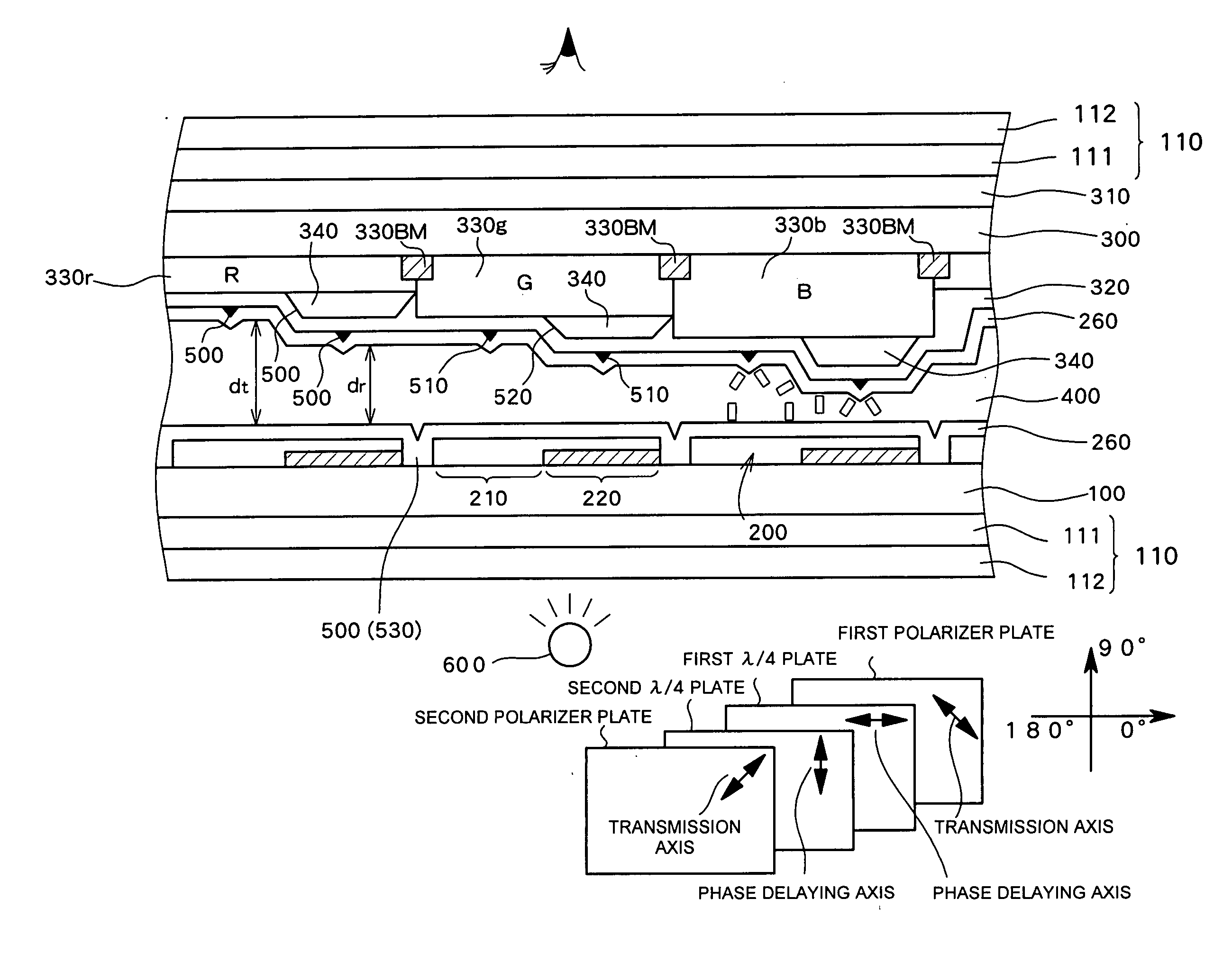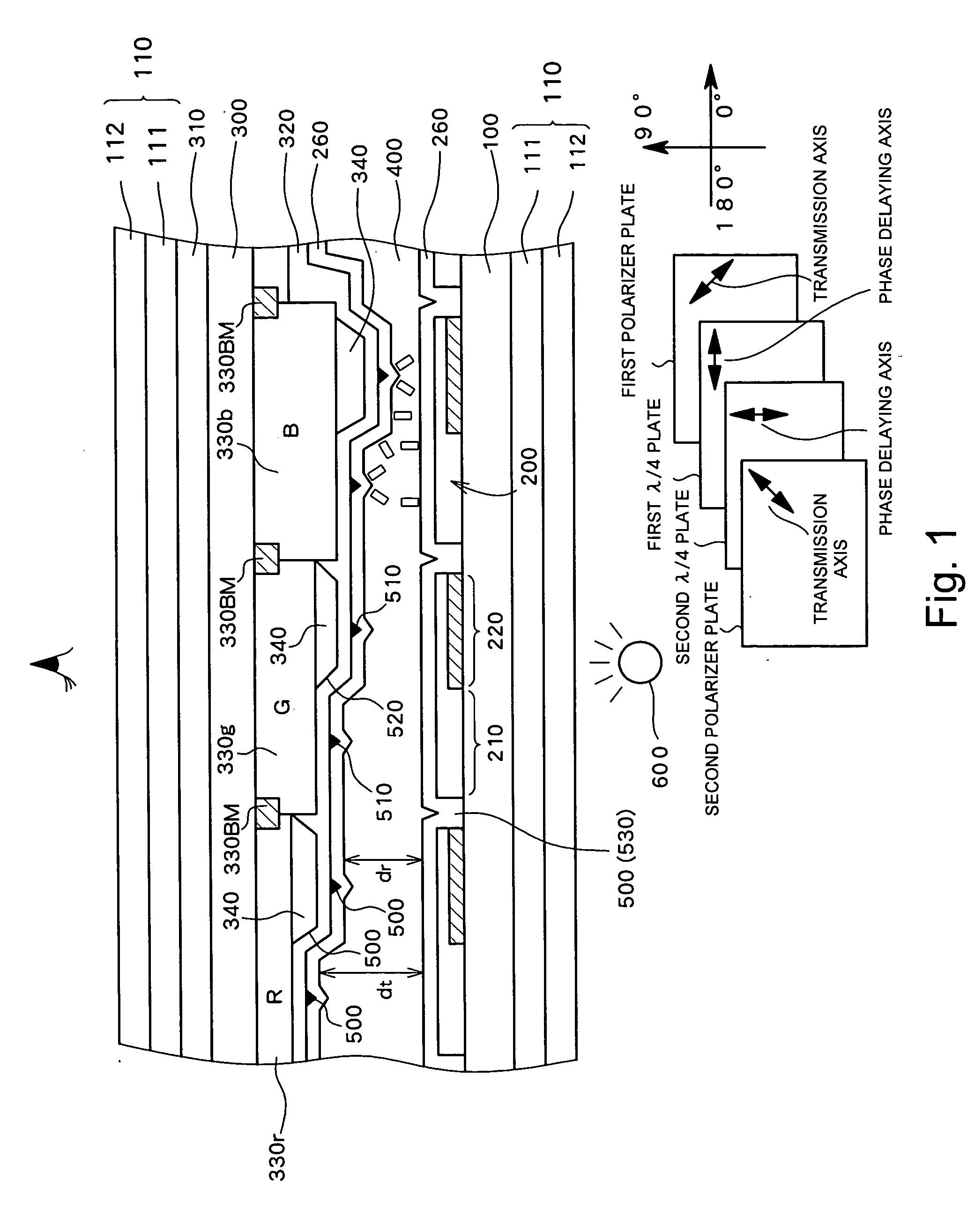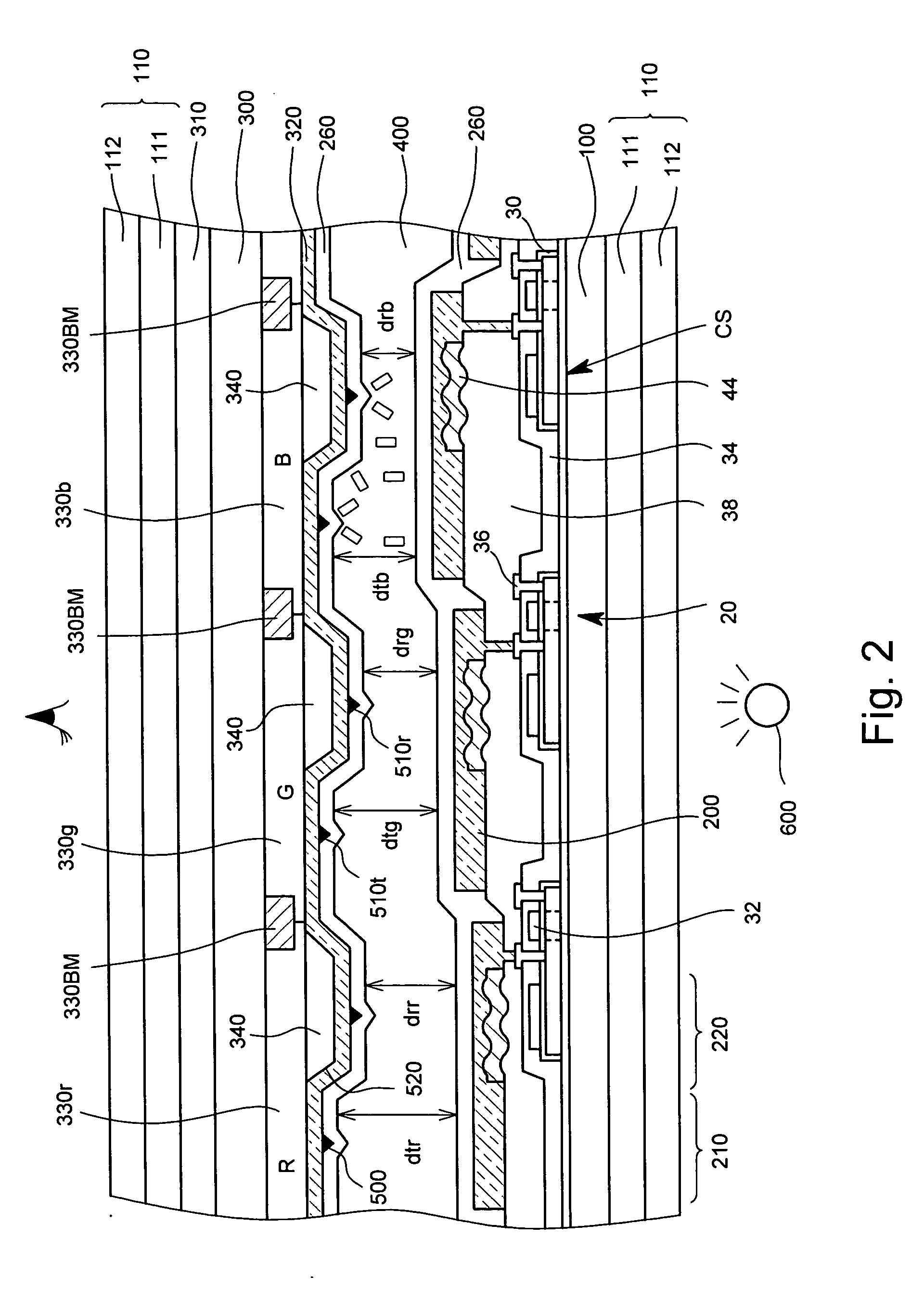Transflective liquid crystal display device and color liquid crystal display device
a liquid crystal display device and liquid crystal display technology, applied in non-linear optics, instruments, optics, etc., can solve the problems of inability to view the display, inability to ensure sufficient contrast in an environment with intense ambient light, and inability to power-up the light source, etc., to achieve the effect of low power consumption
- Summary
- Abstract
- Description
- Claims
- Application Information
AI Technical Summary
Benefits of technology
Problems solved by technology
Method used
Image
Examples
first preferred embodiment
[0058]FIG. 1 schematically shows a cross sectional structure of a transflective active matrix LCD which is used as the transflective LCD according to a first preferred embodiment of the present invention. The transflective LCD according to the first preferred embodiment comprises a plurality of pixels, wherein a first substrate and a second substrate on which a first electrode 200 and a second electrode 320 are formed respectively on a side opposing each other are adhered to each other with a liquid crystal layer 400 therebetween, and a transmissive region 210 and a reflective region 220 are formed in each pixel region.
[0059] A vertical alignment liquid crystal having a negative dielectric constant anisotropy is used as the liquid crystal layer 400 and an alignment controller 500 (alignment divider) for dividing a pixel region into a plurality of alignment regions is provided on the side of the second substrate or on the side of the first substrate. As shown in FIG. 1, the alignmen...
second preferred embodiment
[0121] A second preferred embodiment of the present invention will now be described which is a configuration for improving a display quality in color display. In the below description, color display on a vertical alignment liquid crystal display device is exemplified.
[0122] A vertical alignment liquid crystal display device has a wide viewing angle characteristic and a high contrast characteristic, and has an advantage that no rubbing process of the alignment film is necessary.
[0123] In the vertical alignment liquid crystal display device, because the liquid crystal has a negative dielectric constant anisotropy, the liquid crystal molecules forming the liquid crystal has a characteristic that the liquid crystal tends to be directed in a direction perpendicular to the direction of the electric field. In such a liquid crystal display device, a vertical alignment film is employed as the alignment film for controlling the initial alignment of the liquid crystal and an organic material...
third preferred embodiment
[0143] A third preferred embodiment of the present invention will now be described referring to the drawings. FIG. 18 is a diagram schematically showing a cross sectional structure of a vertical alignment liquid crystal display device according to the third preferred embodiment of the present invention. The components identical to those in the second preferred embodiment are assigned the same reference numerals and will not described again.
[0144] In the third preferred embodiment, in order to achieve different optimum thicknesses of gap G in the red, green, and blue pixels, in addition to the red, green, and blue color filter layers 330r, 330g, and 330b formed on the side of the second glass substrate 300 and the projections 340 (340r, 340g, and 340b) for adjusting the gap difference between the transmissive region and the reflective region, an adjusting layer (gap layer) 350 for adjusting the gap difference for red, green, and blue is provided. More specifically, in the blue and g...
PUM
 Login to View More
Login to View More Abstract
Description
Claims
Application Information
 Login to View More
Login to View More - R&D
- Intellectual Property
- Life Sciences
- Materials
- Tech Scout
- Unparalleled Data Quality
- Higher Quality Content
- 60% Fewer Hallucinations
Browse by: Latest US Patents, China's latest patents, Technical Efficacy Thesaurus, Application Domain, Technology Topic, Popular Technical Reports.
© 2025 PatSnap. All rights reserved.Legal|Privacy policy|Modern Slavery Act Transparency Statement|Sitemap|About US| Contact US: help@patsnap.com



